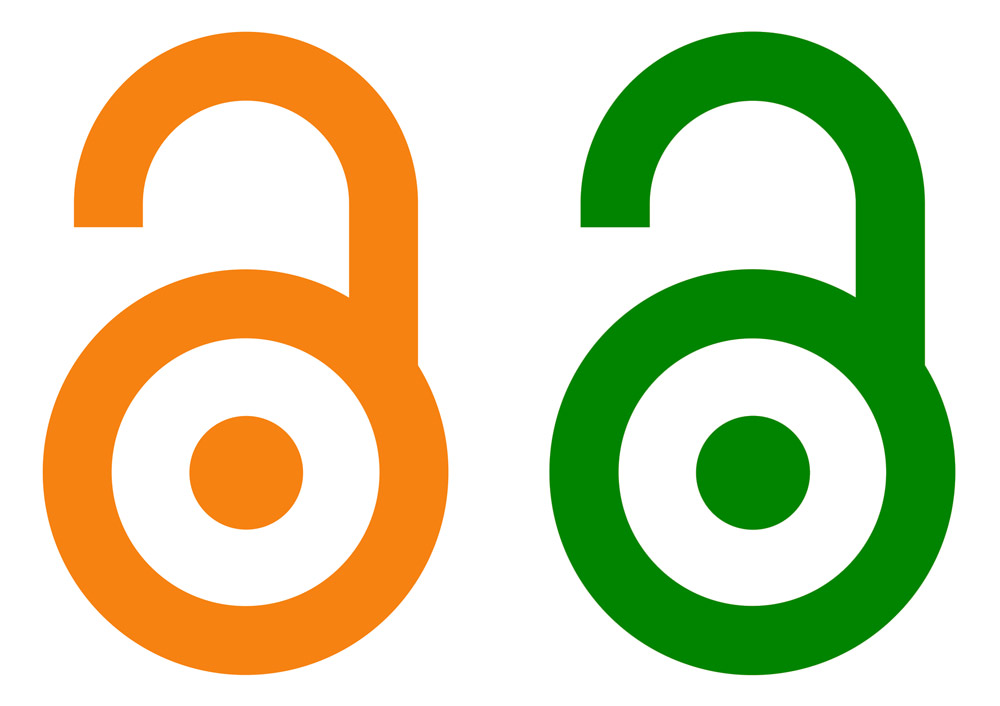Once upon a time …
Researching, writing and then publishing in a journal with as much impact as possible was (and still is for some) the royal road to scientific work. These journals are usually financed by expensive subscription costs and the hermetic sealing off of published content.
A new age
The Internet has opened up completely new publishing opportunities. Since then, the concept of Open Access (OA) has become a central theme in the world of scientific publications. OA enables free access to scientific knowledge without readers – or libraries – having to pay for the content.
Colours
To illustrate the different access models, colour codes are often used, which you should know before considering an OA publication.
There are two main colours:
Gold
The gold road of Open Access refers to the publication of articles in freely accessible, quality-checked Open Access journals. These journals compensate for the loss of subscription sales prices by charging authors article processing charges (APCs). Articles published via the golden road are freely accessible and can be read and downloaded by anyone without restrictions.
Thanks to the DEAL consortium, researchers at most German universities and research institutions do not currently pay APCs to affiliated scientific publishers.
Green
The green road to open access means that authors deposit their research results in institutional or disciplinary repositories. This is often done in parallel with publication in traditional, non-open access journals. The green route enables authors to make their research results freely accessible without paying APC.

In addition to the two main colours, there are a number of other shades whose existence and significance are often still under discussion. They are therefore sometimes only regarded as subspecies of the two main colours.
Diamond (sometimes also Platinum)
In the Diamond Open Access model, neither authors nor readers pay. The aim of this model is to democratise access to academic knowledge by removing financial barriers for authors and readers. Publications are financed by external funds, such as institutional funding or grants. As it differs from the Golden Way only in terms of funding, Diamond OA is sometimes also regarded as a subset of Golden.
Blue
Blue is considered a subset of Green. In some cases, there may also be embargo periods when publishing on Open Access repositories before the article is available. This is then referred to as the blue route.
Yellow
The hybrid route combines elements of the gold and green routes. These are traditional journals that publish both fee-based and open access articles. Authors can choose to make their articles immediately freely accessible for a fee. However, this approach is sometimes criticised as it can lead to double payments – once for the subscription costs and then for the open access publication.
Grey
The self-archiving of scientific works by their authors in not-institutional repositories or other publicly accessible databases is often referred to as the grey route. Many academics also have their own websites on which they publish their publications. These are often pre-printed or reprinted versions of articles that have not gone through the peer review process. In this way, researchers can freely disseminate their work but lack the quality assurance of the peer review process.
Conclusion
The colours of Open Access denote different models. However, the colour codes beyond gold and green in particular are not yet standardised, this needs to be remembered in the discourse on the various advantages and disadvantages or would have to be defined in advance, see https://blogs.tib.eu/wp/tib/2022/10/05/was-diamond-open-access-alles-bedeuten-kann/.
The colour of a manuscript publication has no impact on how you can (and should) publish your research data.
Of course we support all publications that are published as open access. We would like to draw attention to the Diamond OA model, which does not incur any costs for authors or the public.